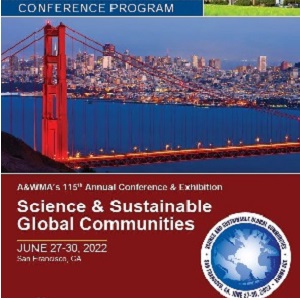Back
Student Poster
Session : Technical and Student Poster Session
1234603 - Food Waste Valorization via Hydrothermal Liquefaction Process: Biofuels and Value-Added Product Recovery (Student Poster #32)
Tuesday, June 28, 2022
10:45am – 12:15pm PT
Location: Exhibit Hall

Hengameh Bayat
New Mexico State University
- MD
Mostafa Dehghanizadeh
New Mexico State University
- CB
Catherine Brewer
Associate Professor
New Mexico State University
Primary Author(s)
Co-Author(s)
Food waste is a significant fraction of the municipal solid waste. Increasing food waste generation (1.6 billion tons per year) due to growth of cities, industrial development and rapid population growth has prompted researchers to pursue alternative waste management methods. Failure to recycle or treat food wastes properly during landfilling will lead to the emission of methane and carbon dioxide, which are both greenhouse gases and contribute to global warming. Repurposing food waste for biofuel production would reduce the environmental impact from landfills and reduce global reliance on crude oil. Food waste is a suitable alternative resource to lignocellulosic biomass and can be converted into bio-crude oil and value-added bio-products using hydrothermal reactions conducted in subcritical water (temperature, T = 250−370 °C; pressure, P = 10−30 MPa). The high moisture content (60–90%) of food waste prevents many other conversion technologies from achieving a net positive energy balance, whereas using hydrothermal liquefaction (HTL) process is able to address pre-drying problems. This study investigated the potential of using food waste as a feedstock for bio-crude oil production. food waste was converted to bio-crude oil via hydrothermal liquefaction (HTL) in a batch reactor at moderate temperatures (240–295°C), reaction times (0–60 min), and 15 wt.% solids loading. The maximum HTL bio-crude oil yield (27.5 wt.%), and energy recovery (49%) were obtained at 240°C and 30 min, while the highest bio-crude oil energy content (40.2 MJ/kg) was observed at 295°C. To moving HTL technology towards commercialization, effective valorization of HTL-byproducts (aqueous phase and char) for the recovery or production of fuels and chemicals is required. The feasibility of utilizing HTL-char as a mesoporous material for adsorption of heavy metals from water and of HTL-AP as an additive for compost is also assessed in this study.

.jpg)
